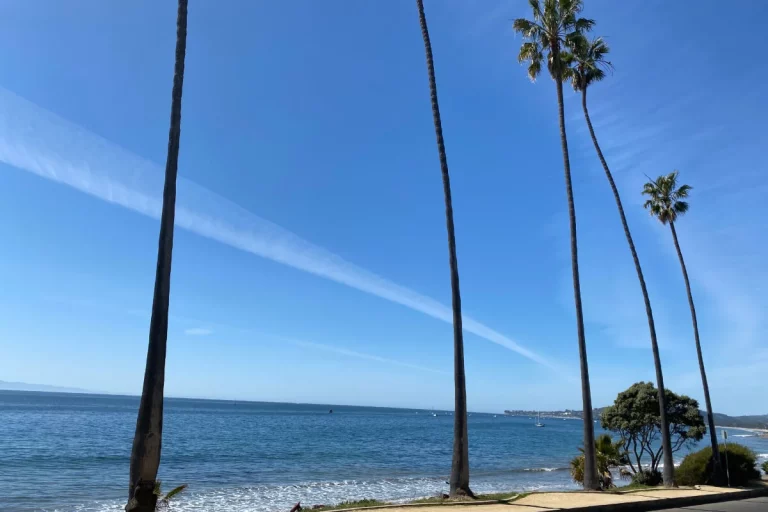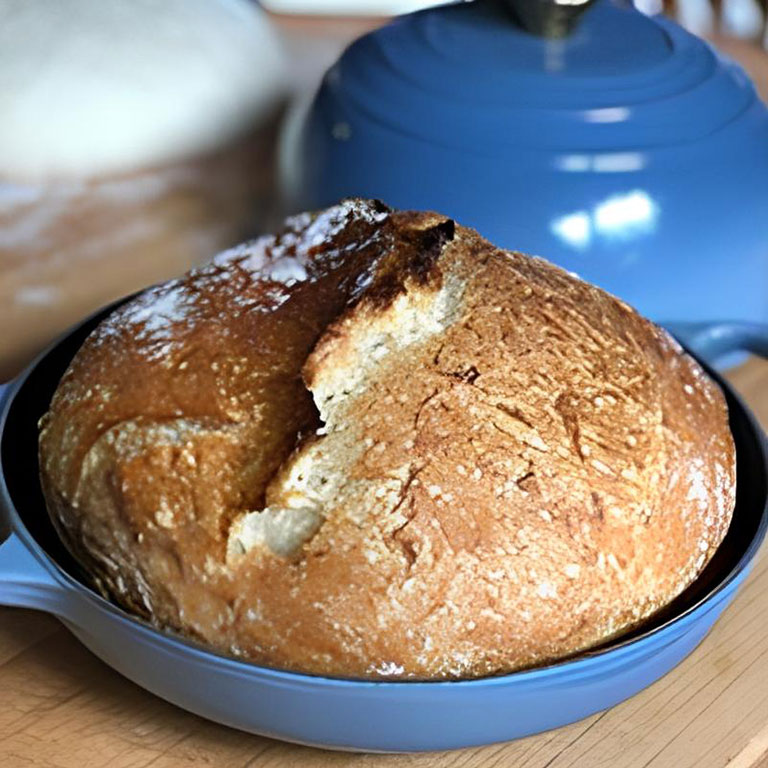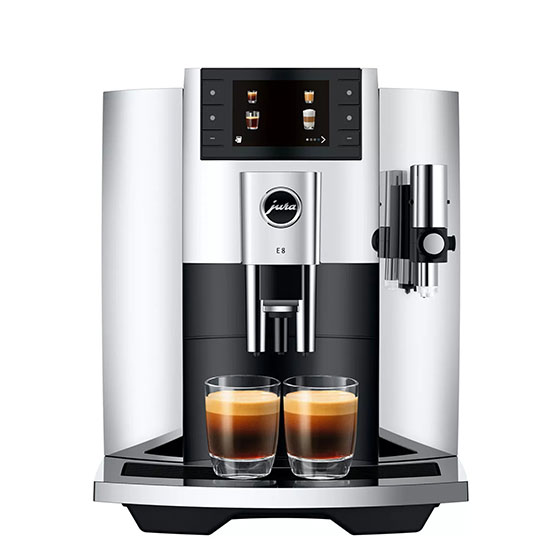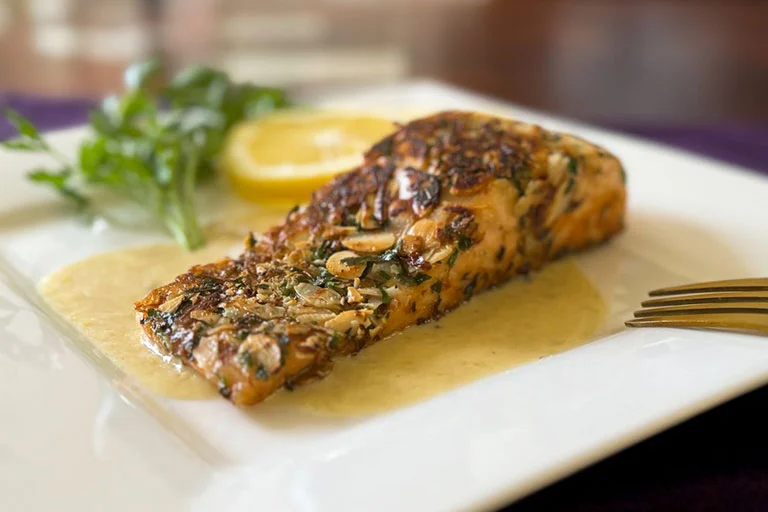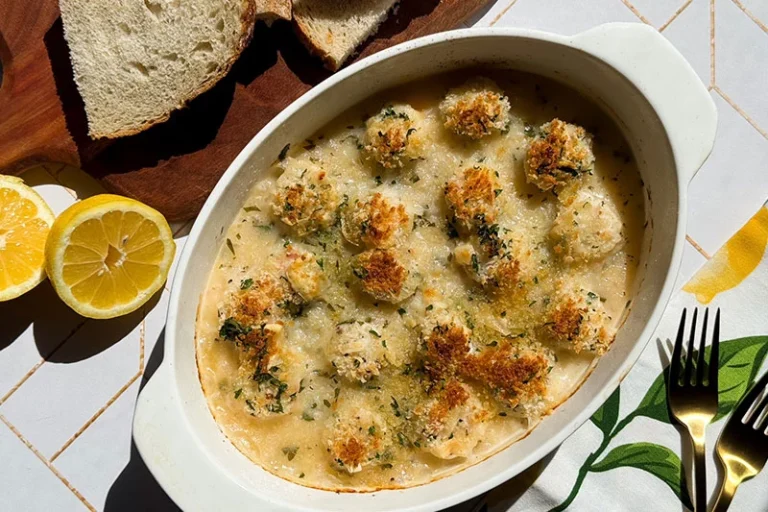
My Curated Tastes is reader-supported. When you buy through links on our site, we may earn an affiliate commission at no extra cost to you. As an Amazon Associate I earn from qualifying purchases.
Baked Panko Scallops: The Ultimate Seafood Delicacy
There’s something magical about perfectly baked sea scallops—that delicate sweetness paired with a crispy, golden panko crust creates a dish that feels both luxurious and comforting. As someone who’s prepared countless scallop dishes over the years, I can confidently say that this baked panko scallop recipe might just be the most foolproof way to enjoy these ocean treasures at home. Whether you’re hosting an elegant dinner party or treating yourself to a special weeknight meal, these baked panko scallops deliver restaurant-quality results with minimal effort.
These baked panko scallops are fabulous served with a side of orzo, steamed veggies and a glass of a crisp, white wine. This is an elegant, easy meal that works well for both a fast weeknight supper or date night. While I love the perfectly seared scallop in my cast iron scallops recipe, baking them with a little crunch and a lot of flavor may definitely be a favorite.
Why You’ll Love This Recipe
These baked panko scallops are a showstopper dish that’s surprisingly simple to prepare. Ready in under 20 minutes, they offer the perfect balance of textures—tender, succulent scallops paired with a crispy, flavorful topping. The buttery, lemony panko crust brings just enough richness without overwhelming the delicate flavor of the scallops themselves.
This dish is elegant enough for special occasions yet simple enough for a luxurious weeknight dinner. Plus, baking the scallops eliminates the stress of achieving that perfect sear on the stovetop—the oven does all the work for you!
Ingredients You’ll Need
- Sea Scallops: The star of the show! Look for large, “dry” sea scallops (more on this in the FAQ section)
- Panko Breadcrumbs: These Japanese-style breadcrumbs create a lighter, crispier topping than regular breadcrumbs
- Unsalted Butter: Adds richness and helps the panko achieve that perfect golden color
- Extra Virgin Olive Oil: Combines with the butter for flavor and helps prevent burning
- Parmesan Cheese: Adds a savory, umami flavor that complements the sweetness of the scallops
- Fresh Parsley: Brings a bright, herbaceous note to the dish
- Lemon Juice and Zest: The acidity cuts through the richness and enhances the scallops’ natural flavor
- Salt: Enhances all the flavors in the dish
- Black Pepper: Adds a subtle warmth
- Cooking Spray: Helps prevent sticking
Possible Substitutions
- Panko Breadcrumbs: Regular breadcrumbs will work in a pinch, though the result won’t be quite as crispy. Gluten-free panko is also available for those with dietary restrictions.
- Parmesan Cheese: Pecorino Romano or Asiago make excellent substitutions.
- Fresh Parsley: Fresh chives, dill, or tarragon can work well as alternatives.
- Butter: For a dairy-free option, use all olive oil or a plant-based butter substitute.
- Lemon: In an emergency, white wine vinegar can substitute for lemon juice (use half the amount), though you’ll miss the zest’s aromatic quality.
Pro Tips for Perfect Baked Panko Scallops
After years of perfecting this dish, I’ve gathered some crucial tips that make the difference between good scallops and mind-blowing scallops:
Selecting and Preparing Your Scallops
- Always opt for “dry” scallops versus “wet” scallops. Dry scallops haven’t been treated with phosphates and will caramelize beautifully rather than steaming.
- Pat those scallops DRY! This might be the most critical step. Use paper towels to thoroughly dry the scallops on all sides before cooking. Any excess moisture will create steam, resulting in soggy breadcrumbs and potentially mushy scallops.
- Remove the side muscle if it’s still attached. This small, rectangular piece on the side of the scallop has a tough texture compared to the rest of the scallop. (See photo below for the muscle piece that is easily removed.)

Perfecting the Baking Process
- Don’t crowd the baking dish! Scallops need space around them to allow hot air to circulate. Otherwise, they’ll steam rather than bake, and your panko crust won’t achieve that desirable crispness. Use a larger baking dish than you think you need, or divide between two dishes.
- The undercooking strategy is foolproof with scallops. They go from perfect to rubbery in seconds, so always err on the side of undercooking. You can always pop them back in the oven for another minute, but you can’t undo overcooking.
- Watch the smallest scallops as your cooking time guide. When the smallest scallop in your batch is just turning opaque, pull the dish from the oven. The residual heat will continue cooking them.
- Resist the urge to add too many seasonings. Scallops have a delicate, sweet flavor that can easily be overwhelmed. The simple lemon-butter-panko combination allows their natural flavor to shine.
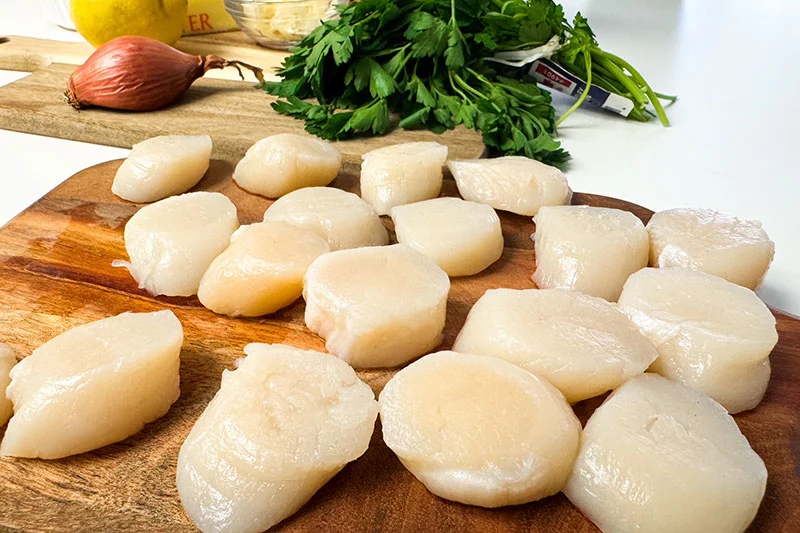
Bay Scallops vs. Sea Scallops: Why Size Matters
For this particular recipe, sea scallops are significantly superior to bay scallops, and here’s why:
Sea scallops are the larger variety, typically measuring 1.5-2 inches in diameter. Their substantial size makes them perfect for baking, as they can withstand the heat long enough to develop a golden crust without overcooking. The larger surface area also provides more room for that delicious panko topping. Don’t stop with this recipe. Try them in my seared scallops on corn puree, Japanese spicy soy scallops and shrimp, scallops & asparagus linguine recipes too.
Bay scallops, while deliciously sweet, are much smaller (about the size of a dime) and cook extremely quickly. By the time your panko topping would begin to brown, bay scallops would already be overcooked. Bay scallops are better suited for quick sautés, ceviche, or as additions to pasta dishes and risottos. I use them in my scallops and mushrooms in puff pastry with a bourbon cream sauce for a great appetizer.
The substantial texture of sea scallops also creates a more satisfying eating experience with the contrast between the crispy topping and the tender scallop beneath.
How to make baked panko scallops
Panko baked scallops is an easy dish to make and one you’ll be making over and over again.
- Pull together all your ingredients and prep your scallops.
- You want to use sea scallops for this recipe and you want to pat them dry with paper towels to remove excess liquid. Next, remove the abductor muscle (the small, tough section on the side of the scallop that connects the scallop to the shell). Discard or save to flavor stock. If saving, place in a plastic bag and keep in the freezer for up to 3 months.

- Next, preheat the oven to 425 degrees F. Coat the bottom of a baking dish with cooking spray. Arrange the prepped scallops in a single layer in the dish. Sprinkle the scallops evenly with salt and pepper.
- Whisk the melted butter, lemon juice and shallots in a small bowl; pour over the scallops.
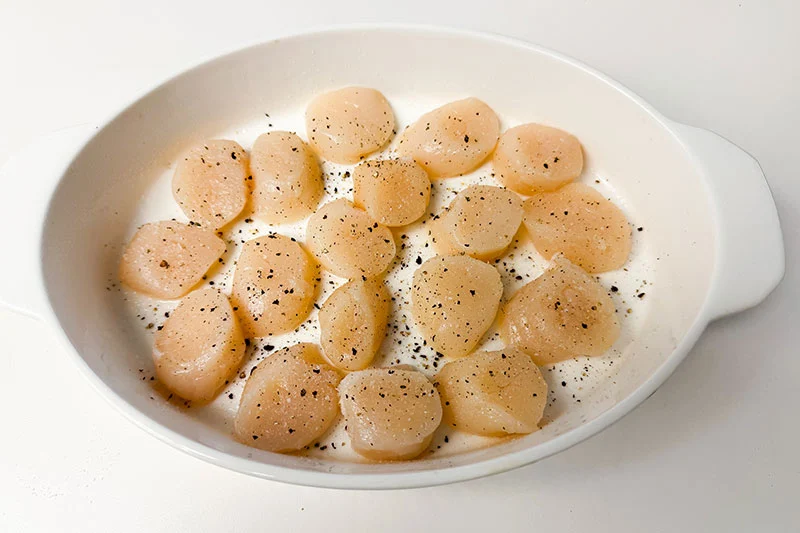
- In the same bowl, combine panko, Parmesan, parsley and the 1 tablespoon of olive oil.
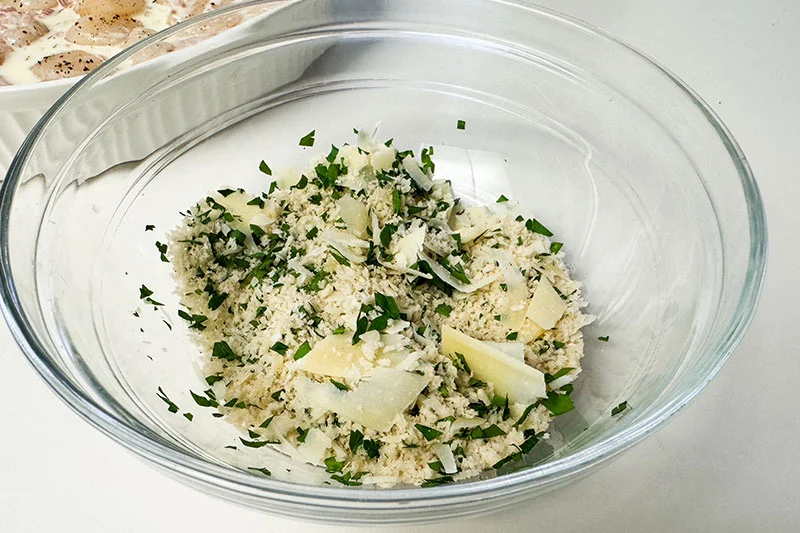
- Sprinkle the mixture evenly over the scallops. While you’ll often hear that seafood and cheese don’t go together, in this dish it makes sense and works. If you are completely opposed, just omit the cheese…you won’t hurt my feelings.

- Bake until the scallops are opaque and the topping is golden brown, 10 to 15 minutes. If the tops aren’t golden after 10 minutes, place under the broiler for 30 seconds to one minute to brown. Serve hot with lemon wedges.
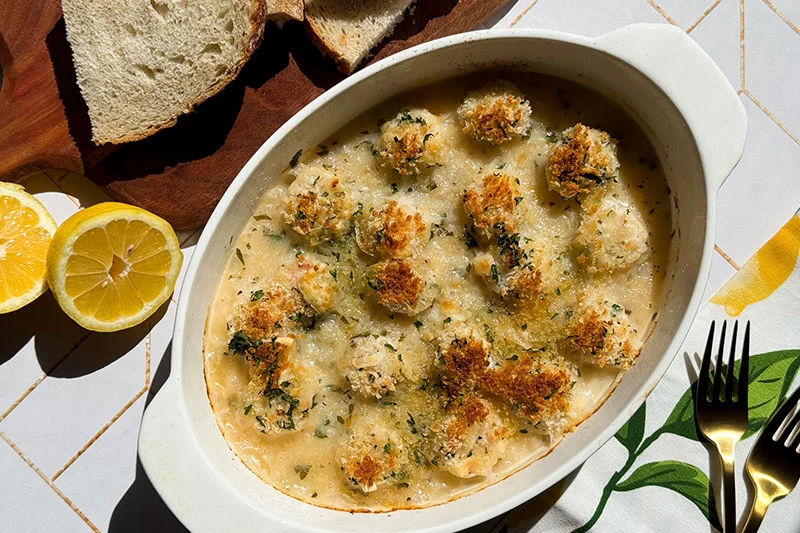
Delicious Side Dishes for Scallops
While these scallops make an impressive party appetizer, they truly shine as the centerpiece of a special meal. Here are some complementary side dishes that will create a memorable dinner:
- Roasted Asparagus: The slight crispness and earthy flavor of roasted asparagus provide a perfect counterpoint to the sweet scallops without competing for attention.
- Scalloped Potatoes: For a more indulgent pairing, creamy, cheesy scalloped potatoes create a luxurious meal. The rich, creamy texture contrasts beautifully with the lightness of the scallops.
- Coconut and Cashew Caulifower Rice: The lightness of this simple coconut and cashew cauliflower rice dish lets these special scallops shine through.
- Crusty Bread or Warm Rolls: Essential for soaking up any buttery panko crumbs left on the plate—trust me, you won’t want to waste a single bite! I love to serve this dish with a loaf of crusty bread as an appetizer or when casually entertaining guests. Wine wine and scallops? Yes, please.
- Simple Green Salad: A lightly dressed salad with a lemony vinaigrette provides a refreshing counterbalance to the richness of the dish.
Frequently Asked Questions About Scallops
Dry scallops haven’t been treated with phosphates and preservatives. They have a natural, sweet flavor, caramelize better when cooked, and don’t release excess water. They’re usually ivory or slightly pinkish in color.
Wet scallops have been treated with a phosphate solution to preserve them and add water weight. They appear bright white, often release excessive moisture during cooking (which prevents proper browning), and can have a slightly soapy taste. Always choose dry scallops when possible.
Fresh scallops should smell sweet and oceany—never fishy. They should have a firm texture and slightly translucent appearance. If buying whole scallops in the shell, the shells should be tightly closed or close when tapped.
No! Simply pat them dry with paper towels. Rinsing would add unnecessary moisture that prevents proper browning.
Overcooked scallops become rubbery very quickly. Scallops need just enough heat to turn from translucent to opaque—any more cooking will toughen the protein. Remember, you can always cook them a bit more, but you can’t undo overcooking.
Yes, but thaw them slowly in the refrigerator overnight. Once thawed, pat them extremely dry with paper towels to remove any excess moisture before cooking.
That’s the “foot” or side muscle that attached the scallop to its shell. It’s edible but tougher than the rest of the scallop, so it’s best to remove it before cooking for the best texture.
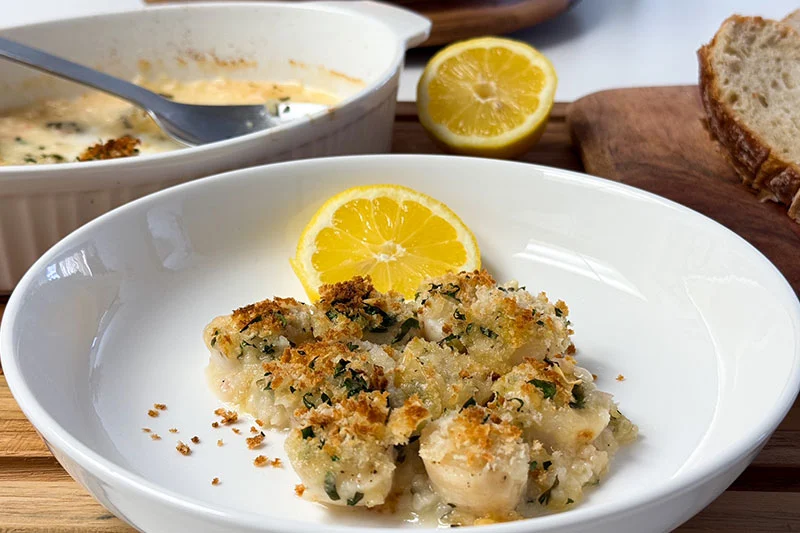
Storage and Reheating Tips
While scallops are best enjoyed fresh from the oven, sometimes we find ourselves with leftovers. Here’s how to handle them:
Storage
- Never leave cooked scallops at room temperature for more than 2 hours.
- Store leftovers in an airtight container in a single layer (not stacked) in the refrigerator for up to 3 days.
Reheating
For the best texture when reheating:
- Use a skillet with a bit of butter or oil over medium heat, just until warmed through. This method helps preserve their texture better than microwave reheating.
- Alternatively, warm them in a 300°F oven just until heated—about 5-7 minutes. Be careful not to overcook them during reheating.
Freezing
If you must freeze leftovers:
- Place cooked scallops in a single layer on a baking sheet and freeze for 1 hour.
- Transfer to a freezer-safe container and store for up to 1 month.
- Reheat from frozen in a 275°F oven until hot throughout.
Final Thoughts
These baked panko scallops represent coastal comfort food at its finest—elegant enough for special occasions yet simple enough to master at home. The contrast between the sweet, tender scallops and the crispy, flavorful panko topping creates a truly memorable dish that will impress even the most discerning seafood lovers.
Remember, the key to success lies in quality ingredients and careful preparation—giving those beautiful sea scallops the respect they deserve with proper drying and thoughtful cooking. Your reward will be a restaurant-quality seafood experience right at your dinner table.
Whether you’re a seasoned seafood cook or trying scallops for the first time, this foolproof method delivers exceptional results every time. Enjoy!
Did you enjoy this recipe? If so, leave a rating and comment below. I’d love to hear from you. If you are looking for other seafood dishes that are easy to prepare, try some of these:
Crispy Tilapia with Mango Salsa
Sheet Pan Lemon Cod on Crispy Garlic Potatoes with Asparagus
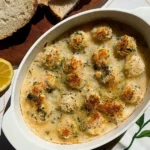
Baked Panko Scallops
Nutritional information is only an estimate. The accuracy of the nutritional information for any recipe on this site is not guaranteed.
Ingredients
- 1 Tbsp. Olive oil
- 1 Lb. Pound large dry sea scallops (about 16 scallops-dry scallops are best if you can find them)
- ¼ Tsp. Kosher salt
- ¼ Tsp. Ground pepper
- 2 Tbsp. Land ‘O Lakes light butter with canola, melted or regular butter
- 2 Tbsp. Lemon juice
- 2 Tbsp. Chopped shallot
- ½ Cup Panko breadcrumbs
- 1/4 Cup Parmesan cheese, grated or shaved
- 2 Tbsp. Chopped fresh flat-leaf parsley
- Cooking Spray
Instructions
- Preheat the oven to 425 degrees F. Coat the bottom of a baking dish with cooking spray. Pat scallops dry; arrange in a single layer in the dish. Sprinkle the scallops evenly with salt and pepper.
- Whisk melted butter, lemon juice and shallot in a small bowl; pour over the scallops.
- In the same bowl, combine panko, Parmesan, parsley and the 1 tablespoon of olive oil. Sprinkle the mixture evenly over the scallops.
- Bake until the scallops are opaque and the topping is golden brown, 10 to 15 minutes. Serve hot. This will serve 4 appetizers or two lunch sized portions.


